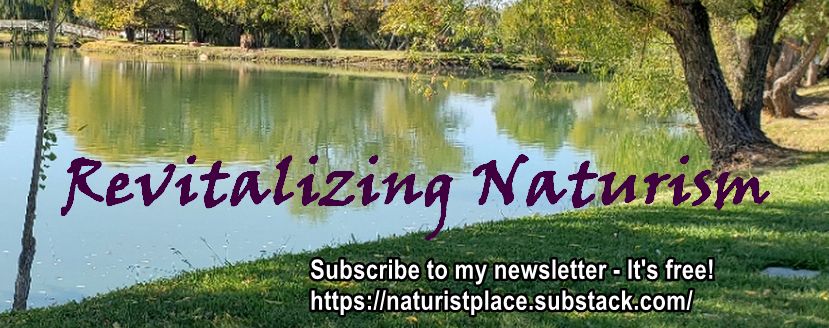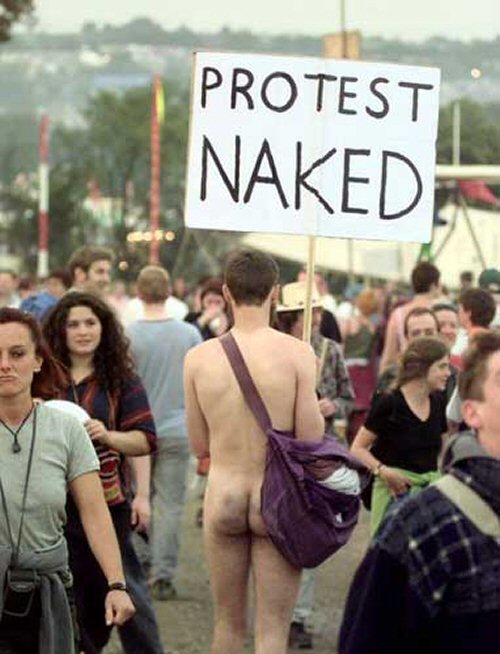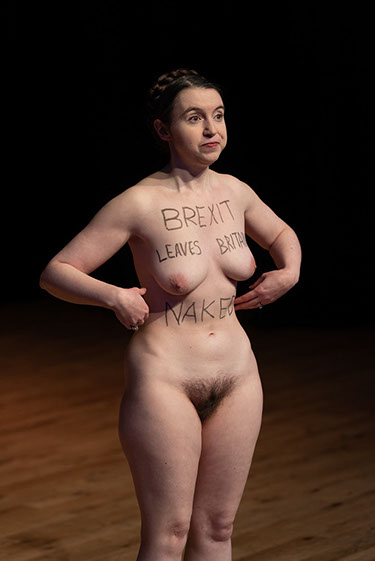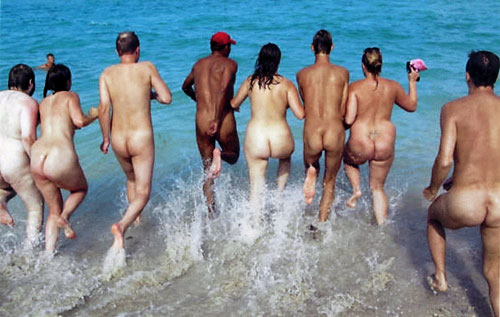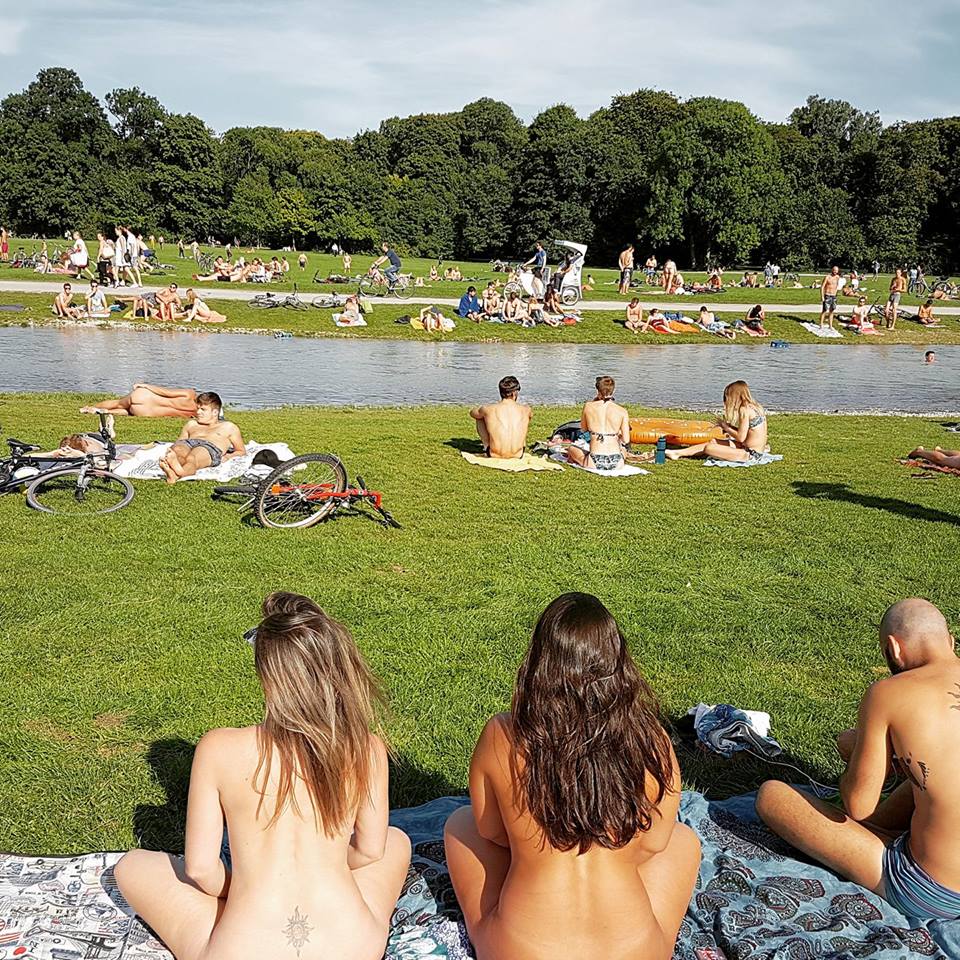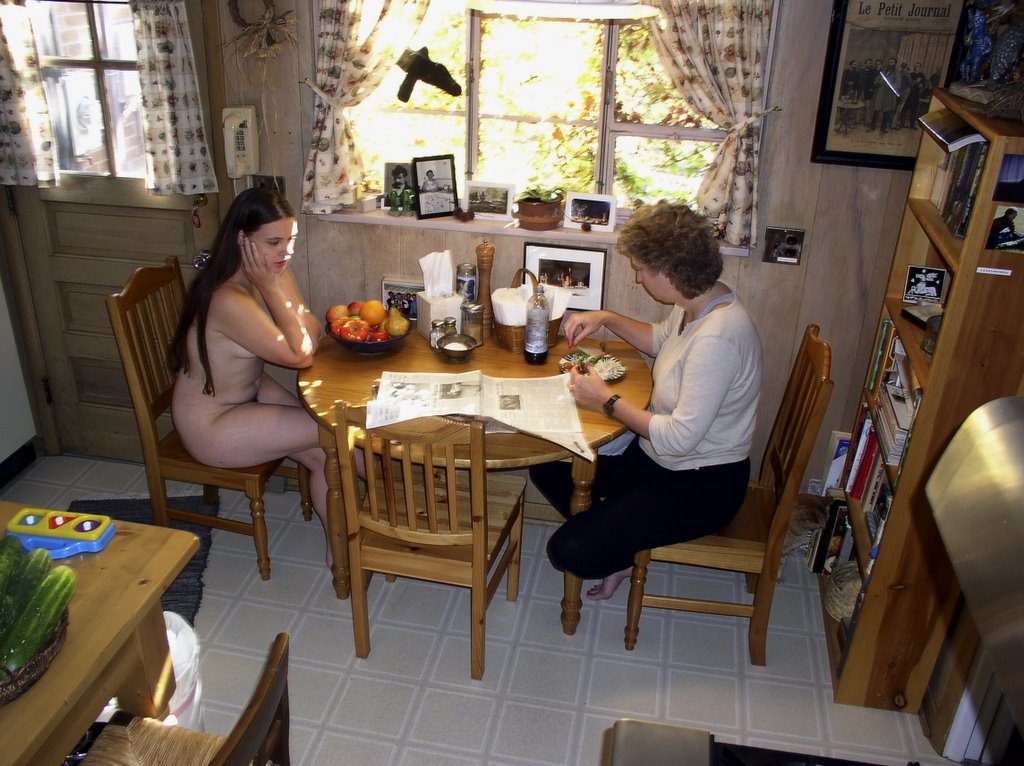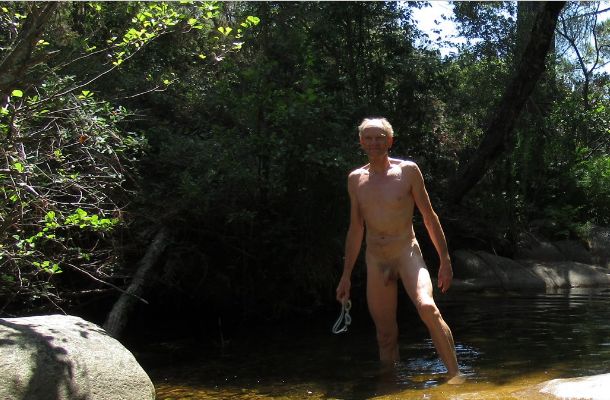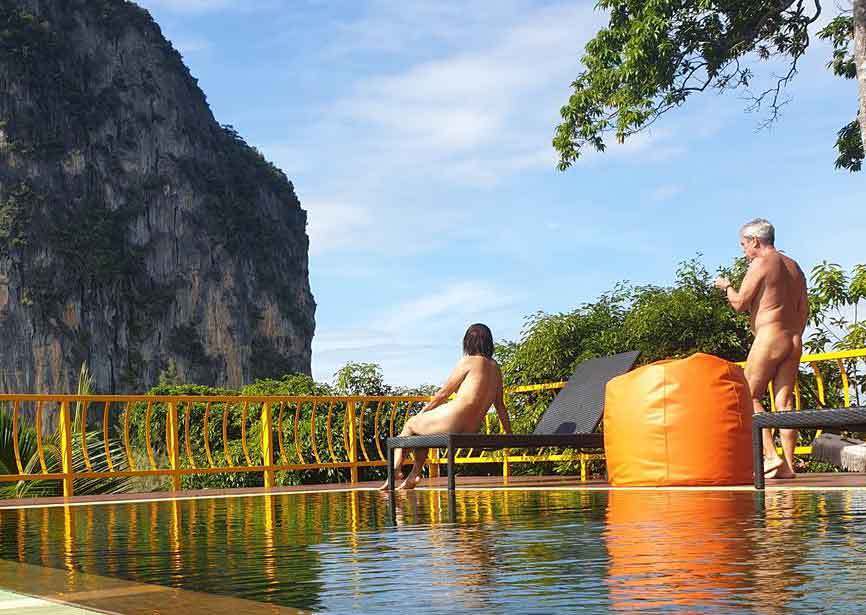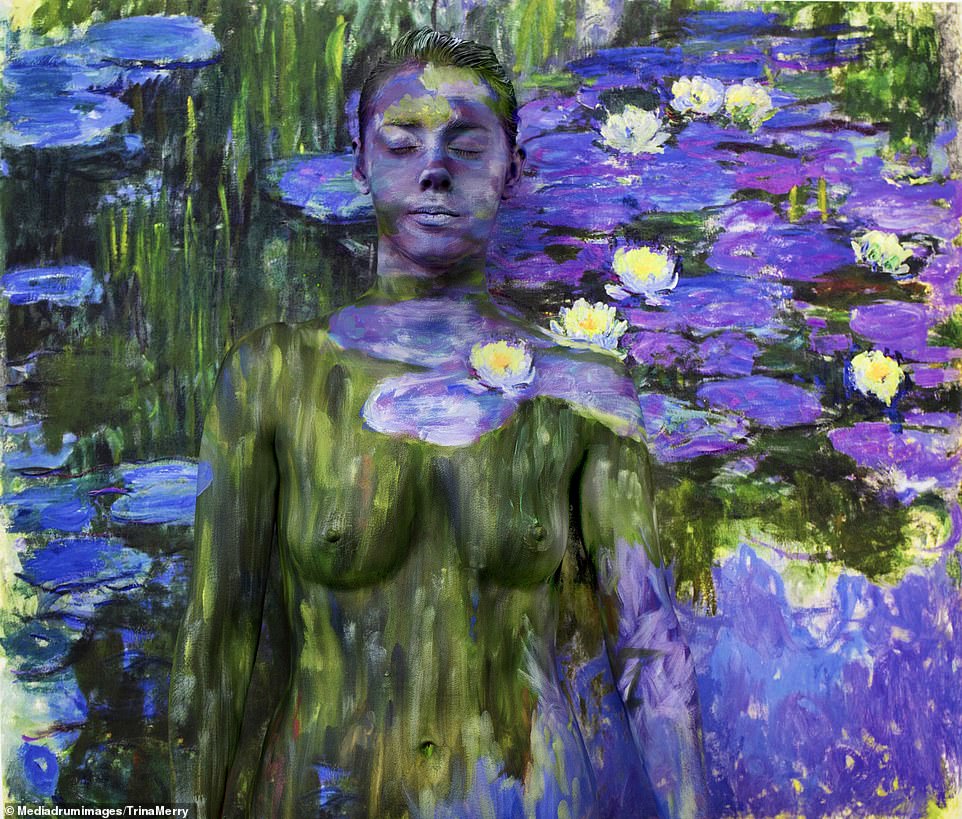
- Body painter turns naked models into classic works of art
Body painting is an art form uniquely suited for appreciation by naturists, for obvious reasons. It’s something that’s been discussed here several times. Although anyone can paint in interesting ways on any cooperative naked model, considerable artistic talent is required for genuinely impressive results. That’s even more true for the subgenre where the art is intended to blend seamlessly into an existing painting or photo. The artist here, Trina Merry, is clearly a master at this. In fact, according to the article, Merry’s work is so highly regarded that she’s done some commissions for a price of more than $100,000.“Working with the human body is really beautiful, it has a personal connection that other artforms have a hard time accomplishing,” Merry says. Many more examples of her work can be found on her website and on Instagram. And here’s another article with additional examples.
- 10 Plus 1 Nudist Beaches in Greece
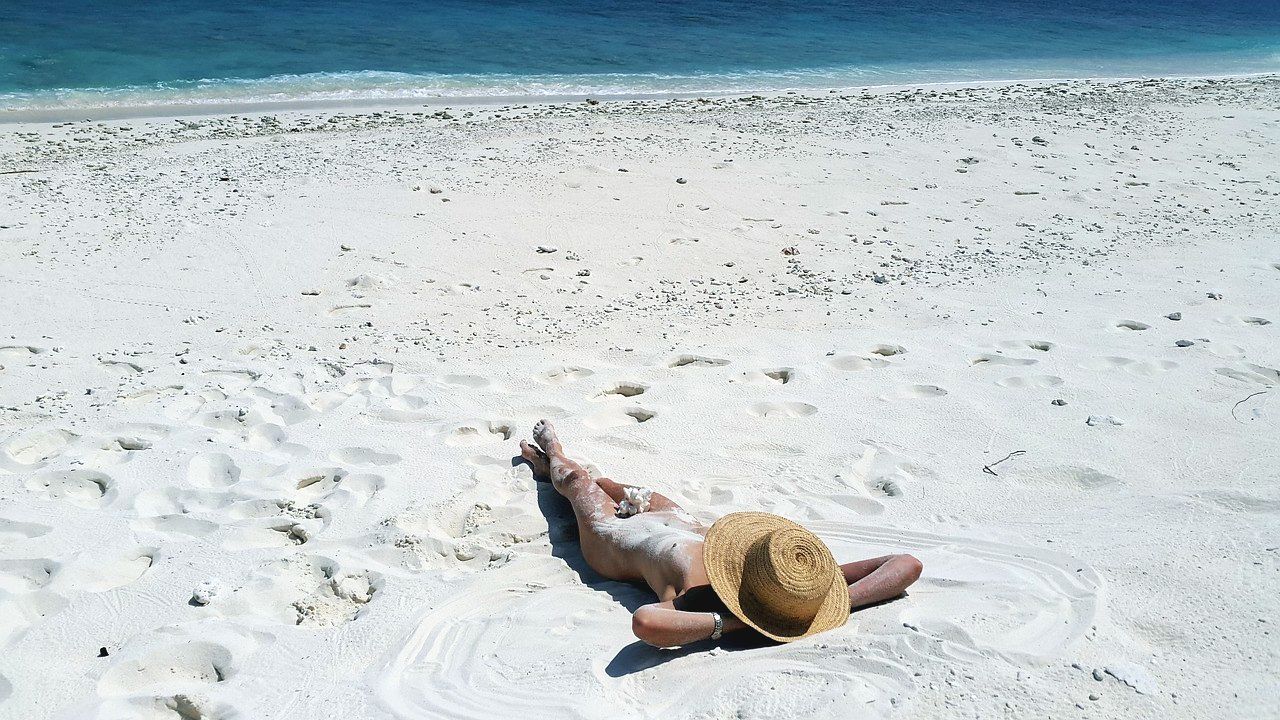
In view of the legendary prevalence of nudity in ancient Greek athletics and art, it may come as a surprise to many that modern Greece isn’t especially known for its tolerance of naturism – unlike, say, nearby neighbor Croatia. Unfavorable attitudes in Greece towards naturism are especially surprising in view of the country’s benign climate and location with abundant coastline on the Mediterranean. The situation, however, is a little different on Greece’s numerous Mediterranean islands. Although the islands have no naturist resorts, there are a variety of beaches where clothing-optional use is possible. Some of those- such as on Mykonos and Crete – are well-known, but many more are little known except to local naturists.Greek naturists are, necessarily, somewhat secretive about their enjoyment of nudity, since (according to the article) “the unaccustomed villagers often looked down on the foreign to them habit.” Nevertheless, there are “over 80 official and unofficial nudist beaches” scattered among the islands. Yet “until recently, most of these beaches were secluded and hard to find. Usually locating a bare-all beach was (and still is to some respect) done by word of mouth. That way only those who really needed and wanted to know knew where to go.” The article here provides directions to 10 island beaches considered the best for skinny-dipping. And the 11th is actually close to Athens, on the mainland.
Check here for one young woman’s rewarding and eye-opening experience at one Greek beach.
- GNA Magazine Signup!
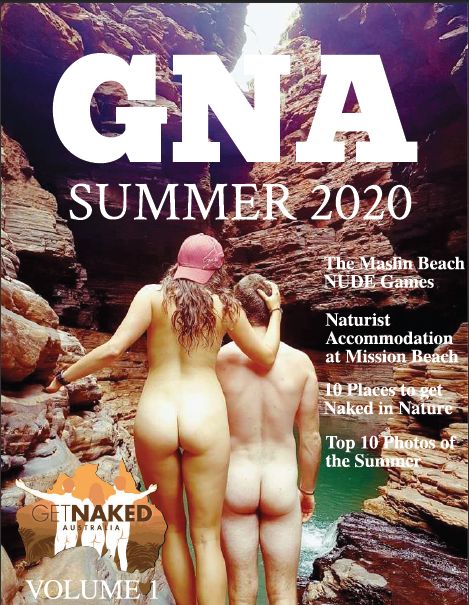
Most professional and scientific organizations have a long history of publishing respected periodicals in their field. In the past couple of decades almost all of these periodicals have also been provided in electronic as well as printed form – in some cases only in electronic form. Some national naturist organizations have more recently done likewise – British Naturism, the Federation of Canadian Naturists, and the American Association for Nude Recreation, for example. (Conspicuously, however, The Naturist Society has yet to follow suit.) In nearly all cases, it’s necessary to be a dues-paying organization member to access either printed or electronic versions of the publications. That makes sense, because it’s expensive to produce a reasonably high-quality publication in either form.
There have also been a few attempts in the past several years to produce online naturist publications that are more like magazines than ordinary websites, sometimes for free and sometimes for a subscription fee. If successful, such publications would be like the nudist magazines of years ago that are discussed in the following article. But none seems to have caught on.
Now, though, the people associated with Get Naked Australia (GNA) are making another attempt. Their magazine is delivered by email instead of on a website. And the first issue has already been distributed. Anyone can simply use the Signup page linked above to request a copy. It comes in the form of a PDF file, so nothing more than a standard PDF reader is required to view it. As a PDF file, it’s also easy to jump around from page to page, and even search for specific words and phrases (location names for instance). It can also be read on a smartphone or tablet. And at a total of 60 pages, it’s full of plenty of text and pictures. Best of all: it’s free.
This magazine looks like a very professional job, so quite a lot of work must have gone into producing it – all done by volunteers, presumably. It will be somewhat amazing if this continues to be available in the present form – without any fees or even advertising. But we can hope. If it is successful, it could make naturism considerably more popular in Australia. An even better outcome would be if both the “Get Naked Australia” idea itself, as well as the magazine, could be duplicated in other countries, but that might be too much to hope for. It would be surprising – but most welcome – if existing naturists organizations could adopt this model for themselves. (Don’t hold your breath though.)
- Preserving Nudist History: An Interview with NaturistVintage – Part One
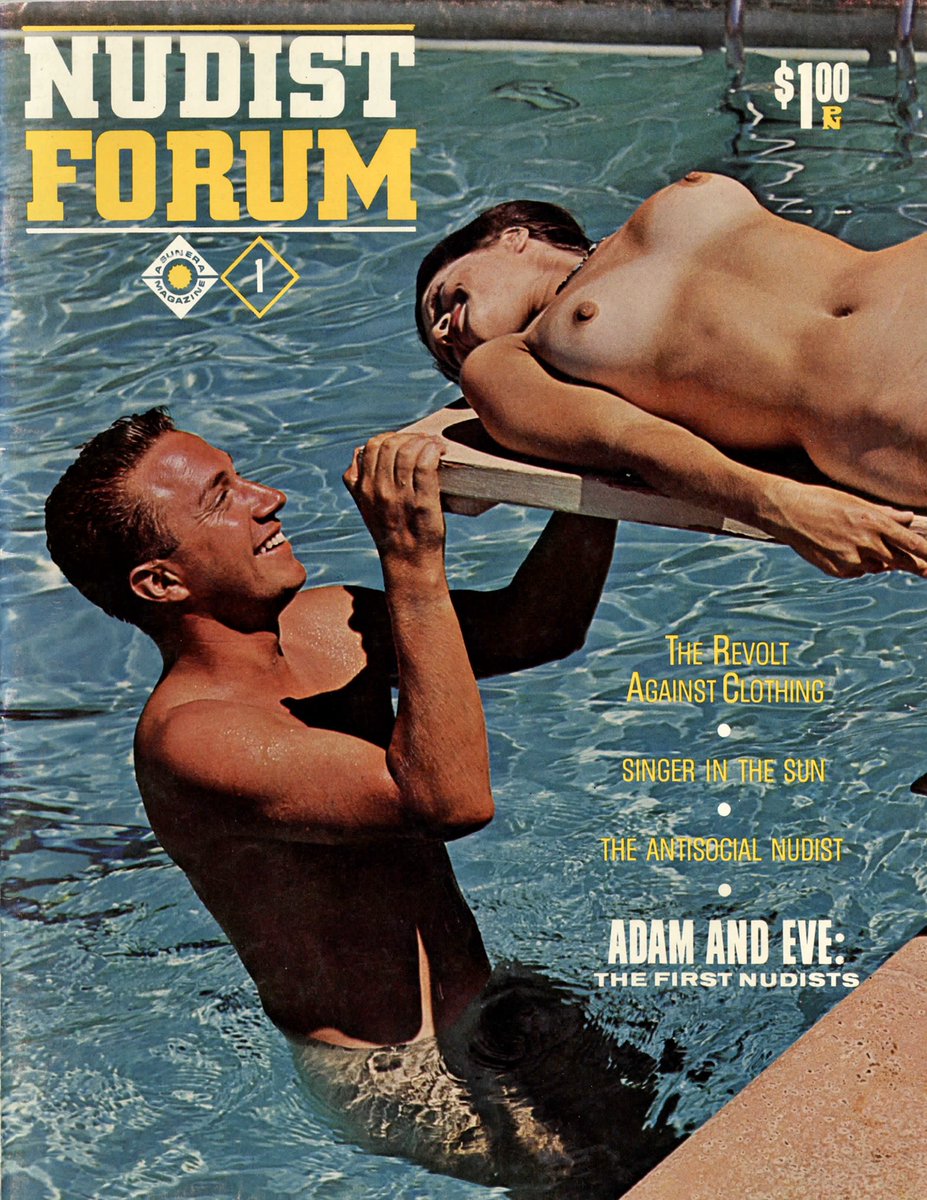
The writer of this article explains: “NaturistVintage is a twitter account that concentrates on posting scans of nudist magazines and photographs. I wanted to learn why they did this.” So the article consists of an interesting Q&A with the account owner, who is an avid collector of vintage (roughly, before 1980) naturist publications.
Anyone who’s discovered the wonders of naturism only recently is probably unaware of the long, but important, history of nudist/naturist magazines. That’s because few remain, mostly those of a small number of national naturist organizations. But at one time there may have been such magazines were a lot more numerous. They probably were the main way that people discovered naturism – in spite of the rather condescending or derogatory way it was usually portrayed in mass media (if it was discussed at all).
Occasionally, before leaving home to go to college, I enjoyed the feeling of getting out of my clothes when nobody was around. But I had no idea that such a thing as nudism even existed until I chanced on a small pile of nudist magazines at a newsstand near my university. That was several decades ago, and I’ve often since regretted being too embarrassed to purchase any of those magazines.
Somewhat later, when I was living where there were many more naturist opportunities, I was able to enjoy naturism for real. But-by that time most nudist/naturist publications had disappeared. If naturism hadn’t remained a long-delayed interest of mine, I quite possibly wouldn’t have discovered it at all. The current lack of anything like the early nudist/naturist magazines available to the general public is undoubtedly one reason that so few people these days – especially in the U. S. – have any idea of what naturism is really about.
Even most newsstands that once carried nudist publications are now gone. Good naturist information certainly is now available on the Internet. But for people who may be curious about the subject, searching for accurate information about it is rather difficult, because porn sites have largely co-opted the terms “nudist” and “naturist” for themselves.
There are now a small number of “libraries” in the U. S. that have collections of the old nudist/naturist publications. But essentially none of the material is online. The libraries are not really open to the general public anyhow, even if people were willing to travel hundreds of miles to visit them. At least, though, there are occasional articles, such as the one linked here, that offer a few tidbits of information on the history.
In theory, it would be possible to digitally copy much of the material and make it available – except that the funds needed to do that are rather unlikely to appear. And it’s not clear whether the information about nudism/naturism as it existed decades ago would really be all that useful and relevant to naturism as it exists today around the world.
- Naturism in Thailand Shows Resilience Against COVID19
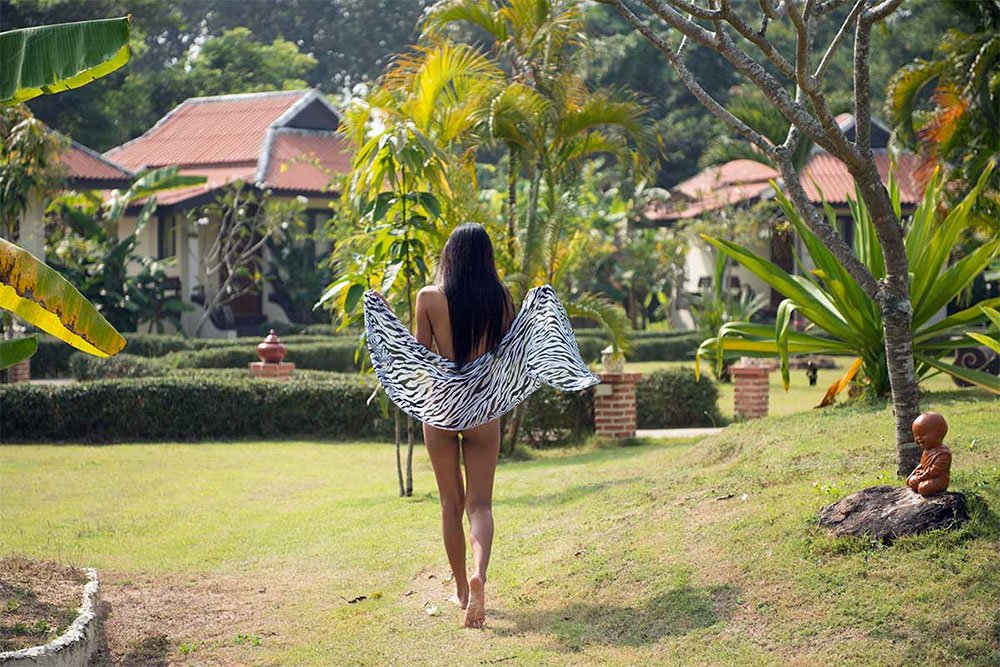
There’s already been a discussion of naturism in Thailand here. It’s essentially the only Asian country with attractive destinations for naturists. In fact, there are at least 8 different options there – described in the article – for your clothing-optional pleasure. And in contrast to the situation in Greece, most of them are comfortable resort locations, not just out-of-the-way beaches.Yes, of course, because of COVID-19 the present time is pretty awful for a vacation just about anywhere. Thailand is, at present, only slightly affected by the pandemic – in sharp contrast with China and South Korea. But nobody can predict what conditions might be like by the time you can take a serious vacation, let alone are able to travel to the destination. So, at least, it’s good to know that the Naturist Association of Thailand has offered a “COVID-19 SAFETY PACKAGE”, which guarantees a full refund without penalties of any kind. The conditions include making the booking with the resort (not through an agency) no later than August 1, 2020, for a visit before the end of the year. Presumably, the refund covers any reason you can’t make the trip, including health problems in your family or cancellation of airline flights.
- British Naturism acquisition of Sunfolk: A bright future for Naturism
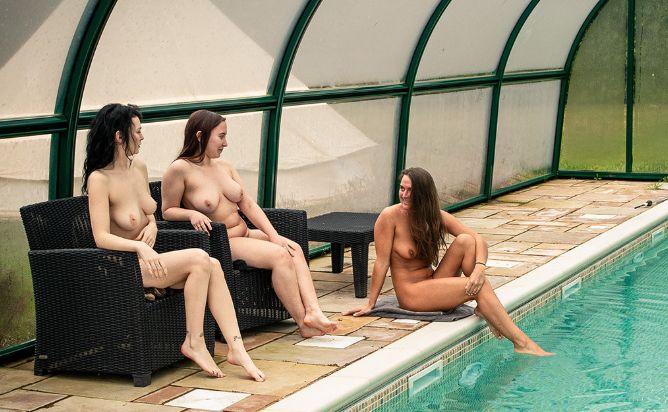
From the article:
“In a major new undertaking, British Naturism has taken over the land and property of The Sun-Folk Society. Not only does this secure the future of the Sunfolk site and its character as a popular naturist club, it will also present opportunities that we expect will form a central tool in the advancement of naturism in the years ahead. The property will in future be known as “British Naturism: Sunfolk”.”Sun-Folk’s website says the club “occupies a beautiful five-acre site between St Albans and Watford.” So it’s a pretty small operation. But according to BN, it’s “one of the oldest clubs in the UK, founded in 1931. Arguably it is the perfect representation of the origins of UK naturism.”
The article’s not very clear about exactly what the relationship of British Naturism will be to this club. Evidently BN was able to purchase the land and facilities on the land. Did they purchase it outright, or take out a mortgage? Perhaps that doesn’t matter, but either way it’s an indication that BN is in good shape financially. BN apparently won’t actually operate the club, since the article says: “A question that might be asked is whether this means that British Naturism is now a campsite operator or a property developer, rather than a campaigning and community organisation. The answer is no.” Apparently the operation will be contracted to a third party. That’s smart, since BN probably has little expertise actually operating physical facilities.
It’s an interesting business model. Any national organization that’s financially sound ought to be able to buy existing naturist properties whose owners want to sell and then contract out the actual operation, perhaps to a single company for more than one site. Indeed, it should be possible to purchase guest houses, campgrounds, and small resorts that aren’t currently clothing-optional to transition them for naturist use. That’s assuming, of course, the properties are in locations that aren’t too expensive yet have many naturists in the general area – or a lot of tourist traffic. As the population density in the UK is much higher than in the U. S., this might be more difficult in the latter country. But it could work in states like Arizona or Florida with robust travel and hospitality industries.
- You CAN Ask That: A nudist lays it all bare

This is from a website of the Australian Broadcasting Company (ABC). It’s a telephone Q&A interview with an Australian naturist. But not just any naturist. The interviewee is “Jessa”, who’s “a nudist, a naked yoga instructor, and she runs a blog called The Nude Blogger.”Although Jessa was interviewed remotely via phone, the link did allow her to appear on TV – uncensored, in fact. She was quite pleased about that, remarking “I’ve seen myself naked on TV before so it wasn’t too much of a shock for me. I love the fact that it was uncensored. I think that’s super refreshing, so that was pretty fun.” She wasn’t embarrassed at all: “I personally am nude in front of people so often – I’m a naked yoga instructor – so I don’t personally feel embarrassed or anything.” And after all, there are plenty of naked pictures of herself on her blog. Undoubtedly, few naturists are as comfortable with their nudity as Jessa – but they should be, at least among friends and family, even if not on TV.
Many of the questions Jessa was asked are just what most naturists would expect – rather banal. But one of Jessa’s responses was exactly on point, something all naturists should emphasize: “what I’m trying to do is normalise nudity so it’s not seen as such a sexual thing because I’m around a lot of men and women and we’re all socialising nude and it’s definitely not a sexual thing.” The only way for nudity to become considered “normal” is to make very clear that it is, in suitable circumstances, just another reasonable choice of attire: NBD – no big deal. We simply need to explain that wearing nothing is merely what feels most comfortable to us at certain times, and anyone who respects us should respect our preference for this, just as we respect the clothing preferences of others.
